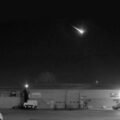During a recent Q&A forum on the night before Valentine’s Day, I was asked about Astrology and its relevance to decisions about our love life. As an astronomer, I clarified that the way stars are organized in the sky has nothing to do with our daily lives. Any correlations between human affairs and the stars must be pure chance, with the same significance as correlations of our love life with the roll of the dice in the Monte Carlo Casino. The stars are too far away to influence our relationships as long as extraterrestrial civilizations near them do not launch devices that interfere with our activities.
Valentine’s Day is a reminder that life is full of fortunate coincidences. Many of us regard the way we met our partner as romantic fate, a singular event that cannot be replicated and colors our life as unique. But is this coincidence truly anomalous from a global perspective? Given the billions of potential human partners on Earth, surely there are thousands that we could have partnered with under similar circumstances. A broader perspective provides meaning to the seemingly rare circumstances that we encounter.
This theme can be extended to cosmic coincidences. Consider the following examples.
First, humans are sentient beings. This is not a random coincidence, since we would not be aware of this fact otherwise. As René Descartes noted: “cogito, ergo sum”, namely “I think, therefore I am.”
Second, archaeologists did not find computer terminals in their digs. This is not a coincidence, because ChatGPT reminds us that computer technology could ultimately deliver sentient artificial intelligence (AI). If so, our future will be very different from our past because of computers and we should not expect to find terrestrial computers in excavations. However, since most stars formed billions of years before the Sun, extraterrestrial AI astronauts could have visited the solar system from interstellar space. We might uncover relics from such visits inside lava tubes on the Moon or Mars.
Third, as of now, we do not have indisputable evidence for technological relics from an extraterrestrial partner. But we need to keep in mind that only over the past decade we were able to discover interstellar objects, out of which the first three: two meteors (IM1 and IM2) and `Oumuamua, did not resemble familiar space rocks and may represent technological devices. We have a chance of finding a partner as long as we are open to interstellar encounters. The possibility that we are not alone should be regarded as the default rather than an exception. Treating it as extraordinary is a self-fulfilling prophecy since it blocks the search. The love life of a person who insists that finding partners is an extraordinary notion would inevitably be dull. The universe might appear pointless to those who focus solely on staying single.
Fourth, the Earth appears unique in that the fraction of its surface covered by land (29%) is comparable to that spanned by oceans (71%). In a paper I wrote with my former postdoc, Manasvi Lingam, we showed that planets dominated by land masses or oceans are likely to have sparse biospheres. The emergence of technological intelligence is likely only on planets with similar land and water fractions, since the interface between liquid water and rock enhances the concentration of essential nutrients and accelerates the evolution of complex life forms towards intelligence.
This theme extends also to timing coincidences.
First, the human lifespan is of the same order of magnitude as the age of modern science and technology: about a century. This might imply that within a human lifetime after the discovery of computer technology, humans will be replaced by sentient AI systems.
Second, humans emerged on Earth at the midlife of the Sun, nearly 40% of the time before the nuclear fuel of our natural furnace is exhausted. This is not a statistical surprise, since most of our lives are spent near midlife rather than as babies or the elderly. Moreover, the Sun will boil off all liquid water on Earth as it ages.
Third, the lifespan of the Sun is comparable to the current age of the Universe. If the Universe was much older, most Sun-like stars would be dead, and the surface of Earth-like planets would be frozen without the chemistry of life as we know it.
Fourth, the vacuum energy density started dominating the cosmic mass budget when the Universe was roughly in the middle of its present age. This is not surprising because the vacuum started dominating roughly when the Sun formed, and the lifespan of the Sun is comparable to the age of the Universe. If the vacuum density dominated much earlier, the Milky Way galaxy would have never given birth to the Sun.
Altogether, these cosmic coincidences illustrate how a global perspective could offer sober reasoning to what otherwise might be perceived as luck. This approach will come handy on a futuristic Valentine’s Day, when we finally find our partner civilization from interstellar space. The romantic sense of cosmic fate will fade away as soon as we realize that there are many more potential partners out there. Soon after the first encounter, interstellar romance will be substituted by the next Copernican revolution, implying that what happens to us is not unique or special.
Based on the recent Q&A forum, I am willing to bet that many humans will continue to believe that fate brought us together with our extraterrestrial partners. For the first time in the history of astronomy, connecting our human affairs to the stars will make complete sense.
Avi Loeb is the head of the Galileo Project, founding director of Harvard University’s – Black Hole Initiative, director of the Institute for Theory and Computation at the Harvard-Smithsonian Center for Astrophysics, and the former chair of the astronomy department at Harvard University (2011-2020). He chairs the advisory board for the Breakthrough Starshot project, and is a former member of the President’s Council of Advisors onScience and Technology and a former chair of the Board on Physics and Astronomy of the National Academies. He is the bestselling author of “Extraterrestrial: The First Sign of Intelligent Life Beyond Earth” and a co-author of the textbook “Life in the Cosmos”, both published in 2021. His new book, titled “Interstellar”, is scheduled for publication in August 2023.

